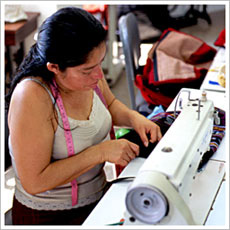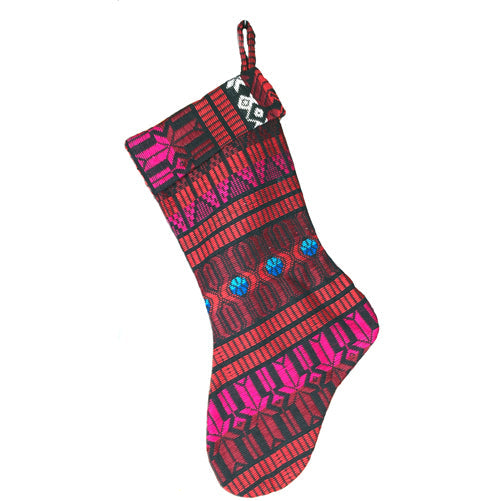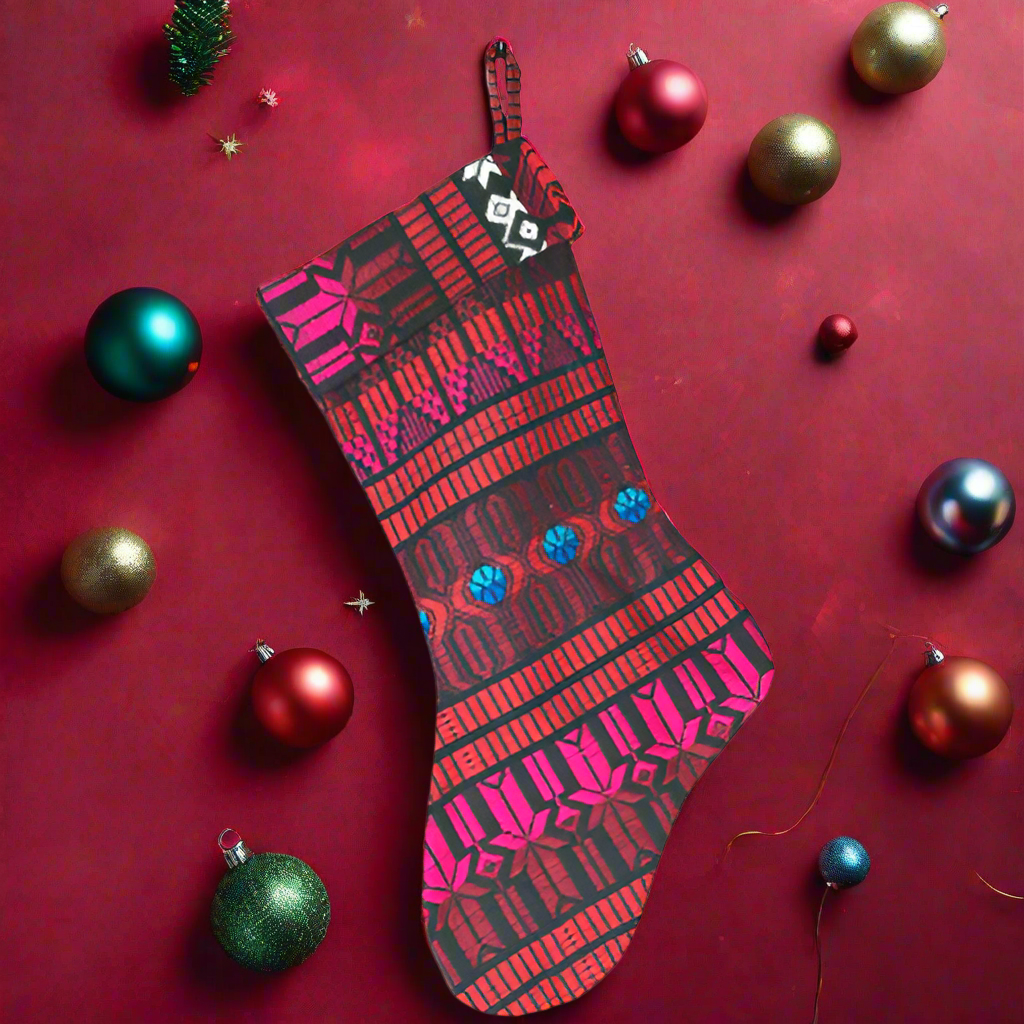OWP
Handwoven Reclaimed Cotton Christmas Stocking-Multi-colored- 15"L
Handwoven Reclaimed Cotton Christmas Stocking-Multi-colored- 15"L
Couldn't load pickup availability
This beautiful handmade Christmas stocking has an intricate pattern that has been hand-woven into this Christmas stocking. Made by artisans in Guatemala on traditional back-strap looms using this complex and unique technique passed down through generations of Mayan culture. Enjoy decorating with this detailed, handmade stocking and ring in the joyous spirit of the season.
These bright, cotton Christmas stockings are made by women artisans from the UPAVIM cooperative on the outskirts of Guatemala City. UPAVIM, which stands for United for a Better Life, is an 80-member artisan enterprise helping women through social and economic empowerment. In addition to training women in creating various handmade textiles, UPAVIM has established a school, a pharmacy, and a bakery within their cooperative.
- Measures 15” high x 7” wide
Handmade in Guatemala and fair trade imported.

UPAVIM Crafts is a cooperative of women who live in marginalized communities on the outskirts of Guatemala City. The women in the organization are mothers, homemakers, and, widows and some have been abandoned by their families. Many of them are the sole breadwinners for their families. Unidas Para Vivir Mejor (United for A Better Life, or UPAVIM) was established in 1989 to create jobs for these women and to establish facilities for healthcare, education, and other social issues to benefit the community they lived in. Over the years, UPAVIM has grown from a small community health project to about an 80-member business cooperative. The organization employs teachers, seamstresses, nurses, administrators, cooks, cleaners, and secretaries each of whom is paid a fair wage and is linked to UPAVIM ‘s fair trade business.
To learn more about the talented women at UPAVIM and the techniques they use to create these unique and eco-friendly items, please click on "About the Artisans".
Share
About the Artisans
About the Artisans
 Joyeria Semilla meaning Seed Jewelry is a small fair-trade workshop in the Andean town of Villa de Leyva, Colombia. Girasol Taborda, a local artisan and social entrepreneur, started the workshop in the mid-1990s.
Joyeria Semilla meaning Seed Jewelry is a small fair-trade workshop in the Andean town of Villa de Leyva, Colombia. Girasol Taborda, a local artisan and social entrepreneur, started the workshop in the mid-1990s.
Joyeria Semilla’s objective is three-folds; to create new jobs, revive Colombia's handicrafts sector and to motivate locals to better manage their natural resources. The organization works primarily with socially and economically disadvantaged youths, single mothers and people with disabilities in the area. The company offers free training in product design, technical training and marketing to new members. Joyeria Semilla has trained them in the craft of jewelry-making.

Caña Flecha or “Gynerium Sagittatum” is a locally found palm tree in the regions of the Caribbean coast. The leaves from this plant are used for making jewelry, woven hats, bags and baskets. The Zenú Indians were and their descendants inherited the tradition of picking veins of the green palm leaf for weaving. These veins were made into woven hats and other products for their personal use.
The Zenú culture is said to have existed between 200BC to1600AD. With the arrival of the colonizers in the 16th century, the indigenous community declined of unknown reasons. Today a very small population remains that claims the inheritance of the almost extinct Zenú tribe. Known for their skills in the construction of major waterworks, canals and irrigation system along with being skilled goldsmiths, examples of their accomplished craftsmanship are found in various museums around the world. Their larger means of subsistence were hunting, farming, fishing and trading.
Caña Flecha is found in abundance in the region, and hence makes for a sustainable and naturally available raw material for these products. Every bit of the plant is utilized – from using in building walls and roofs in houses to food for cattle and medicinal purposes. It is from the central vein of the leaf that the fibers for weaving are obtained. After the hard surface is peeled off, the fibers are left in the sun to dry and undergo a natural tinting process; these fibers are barely about 1 millimeter in thickness and hence call for a lot of skill and patience to weave with. The dried fibers are then processed for natural coloration - some are boiled with lemon to whiten them and some are treated with mud and boiled with plantain leaves to blacken them. The designs are based on ancient motifs and mathematical representations, which are inspired by the early Zenú culture.






